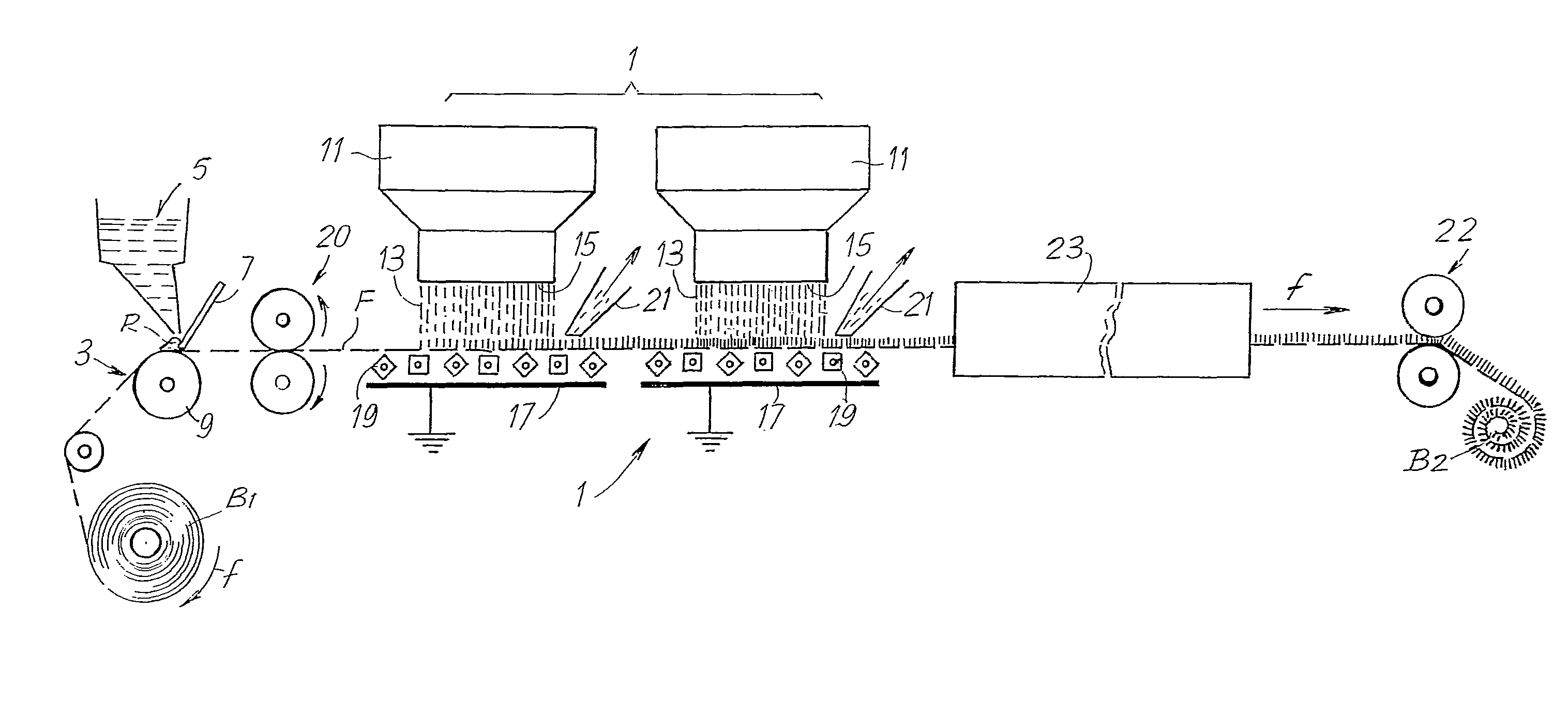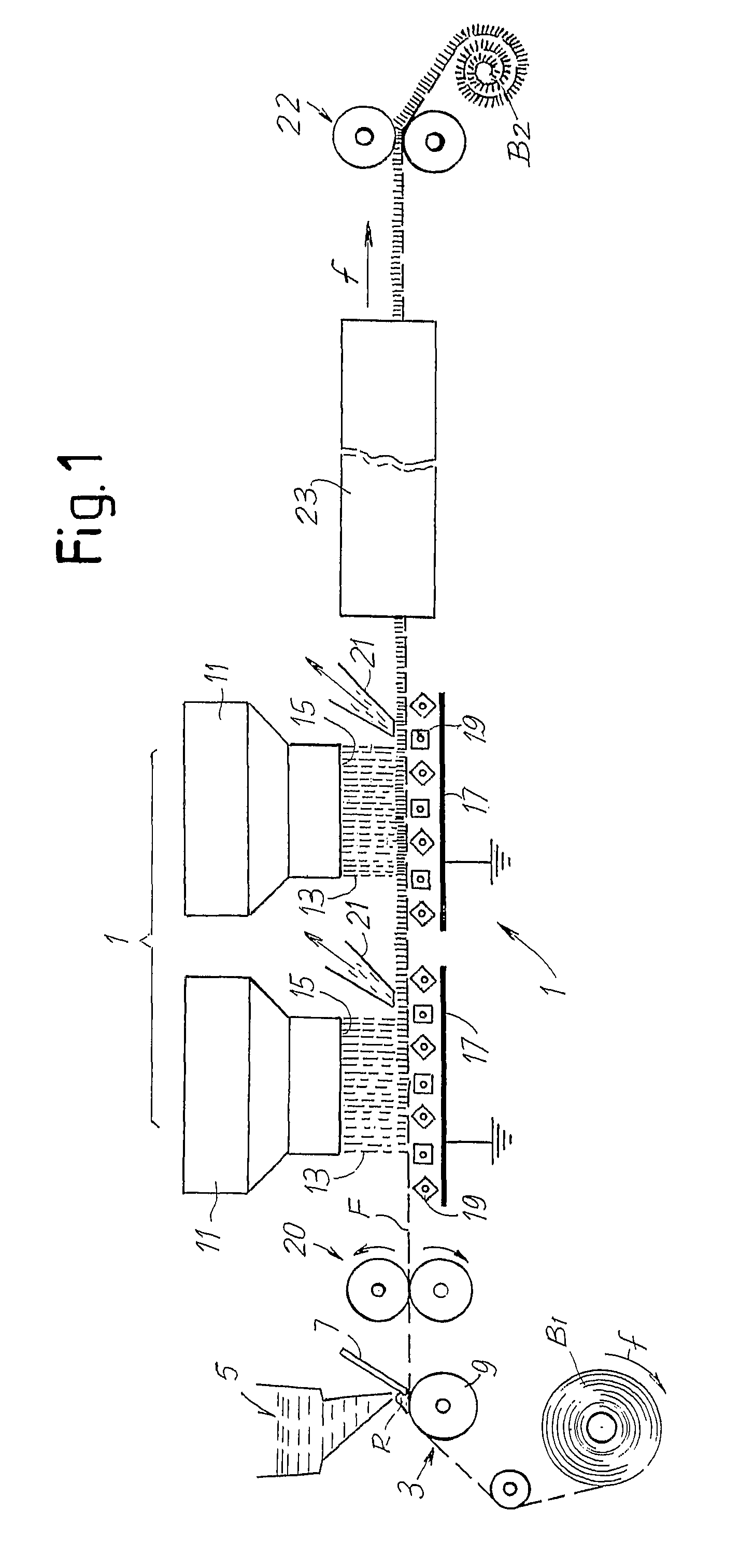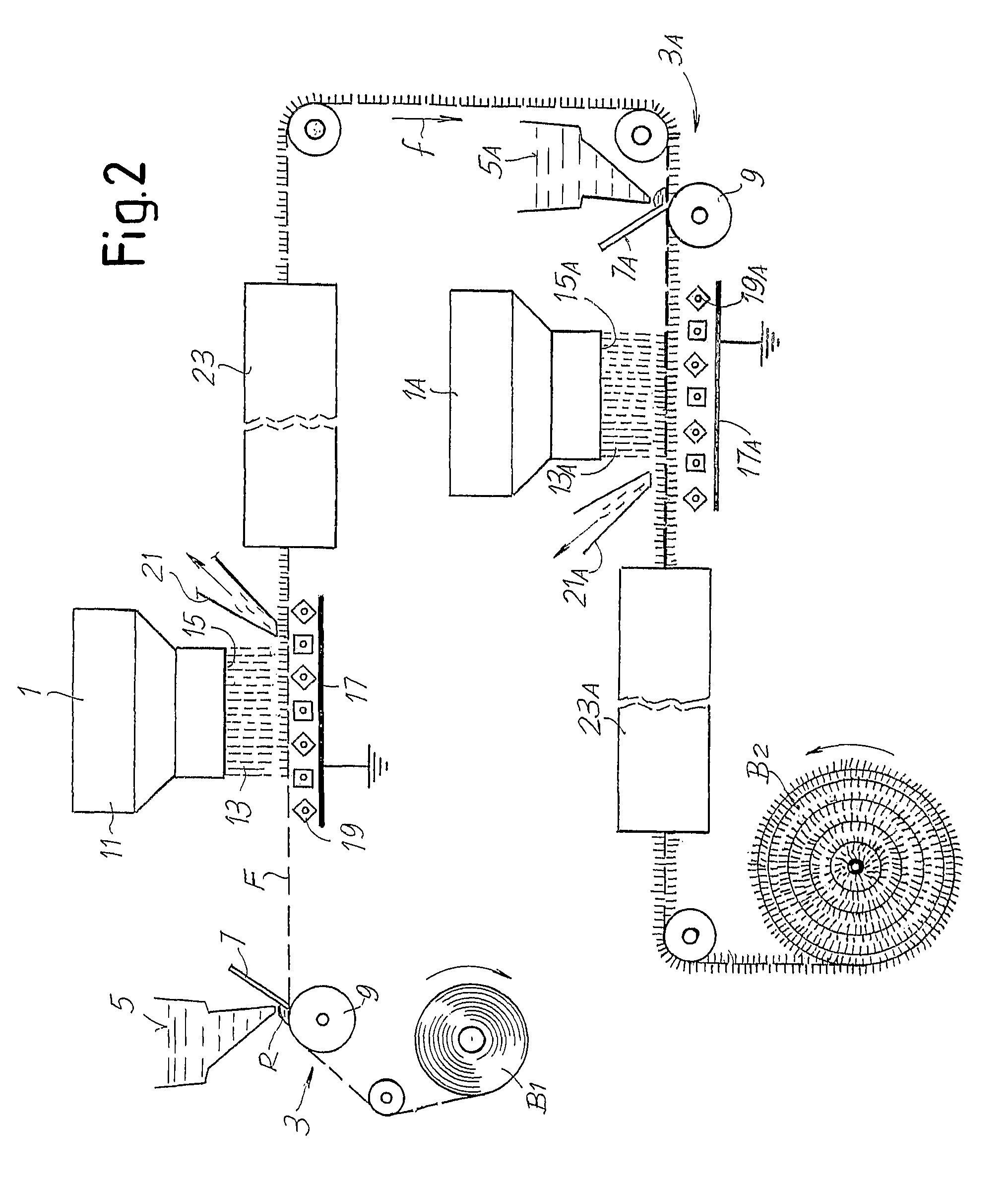Elastic material coated in fibers, a diaper comprising said elastic material and a method for the production thereof
a technology of elastic material and fibers, applied in the field of hygiene products, can solve the problems of cutaneous irritation, complex process machinery, fiber breakage, etc., and achieve the effects of reducing the number of diapers
- Summary
- Abstract
- Description
- Claims
- Application Information
AI Technical Summary
Benefits of technology
Problems solved by technology
Method used
Image
Examples
Embodiment Construction
[0071]FIG. 1 shows, very schematically, a system for producing a flocked elastic film according to a first embodiment. Systems of this type are per se known and are commonly used to produce imitation velvets. A system of this type can be adapted to produce the film according to the present invention. The structure is described briefly here, without going into the constructional details, known to those skilled in the art.
[0072]B1 indicates a reel of elastic film F to be treated, which is unwound according to the arrow f and fed to a flocking machine 1. The film can have elasticity in machine direction (MD), i.e. in the direction of feed and preferably has an elasticity in cross direction (CD).
[0073]Positioned upstream of the flocking machine 1 is a coating station 3, in which a hot melt coating system 5 or another suitable means distributes a hot melt adhesive R or a polymerizable resin R on the upper face of the film F, which forms a bonding layer of the flocked fibers on the film. ...
PUM
| Property | Measurement | Unit |
|---|---|---|
| elongation | aaaaa | aaaaa |
| elongation | aaaaa | aaaaa |
| thickness | aaaaa | aaaaa |
Abstract
Description
Claims
Application Information
 Login to View More
Login to View More - Generate Ideas
- Intellectual Property
- Life Sciences
- Materials
- Tech Scout
- Unparalleled Data Quality
- Higher Quality Content
- 60% Fewer Hallucinations
Browse by: Latest US Patents, China's latest patents, Technical Efficacy Thesaurus, Application Domain, Technology Topic, Popular Technical Reports.
© 2025 PatSnap. All rights reserved.Legal|Privacy policy|Modern Slavery Act Transparency Statement|Sitemap|About US| Contact US: help@patsnap.com



